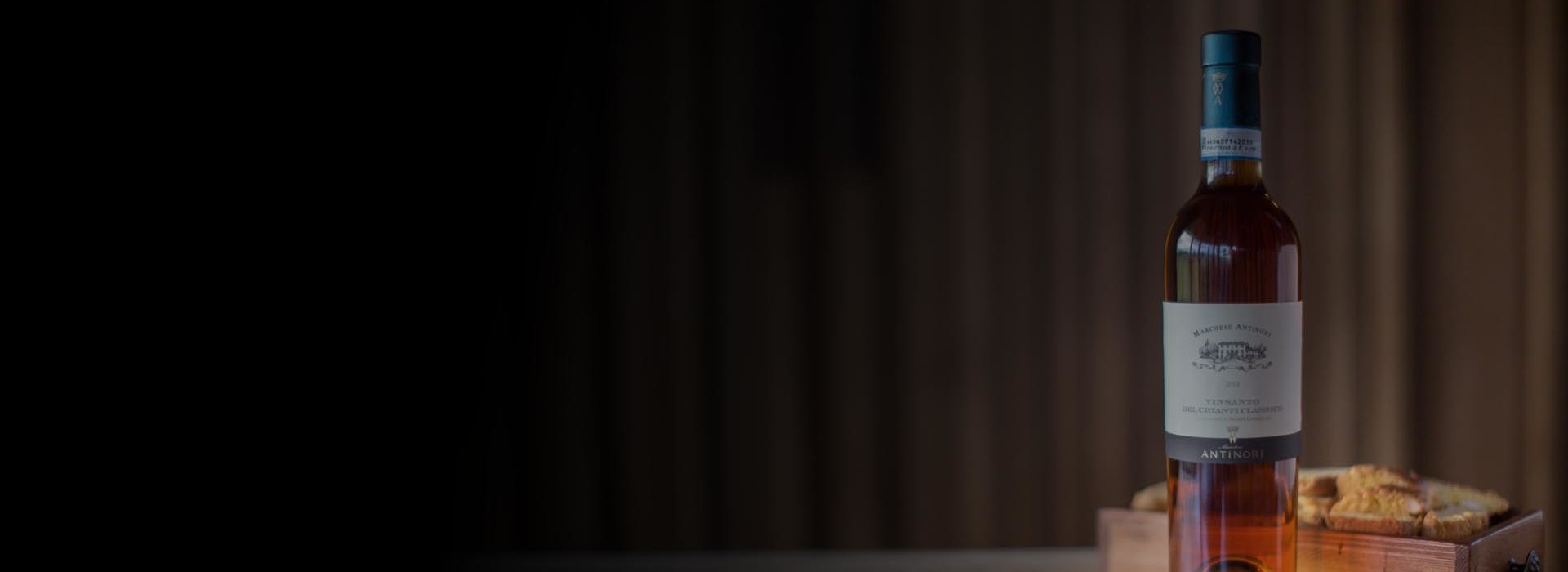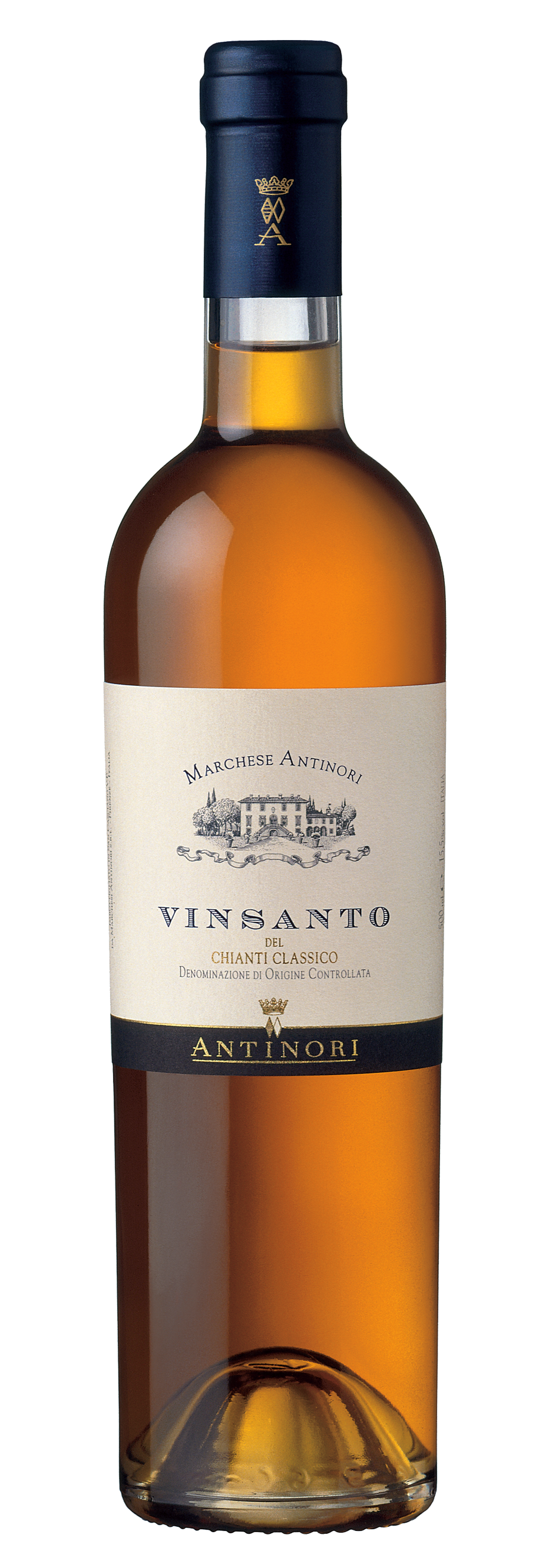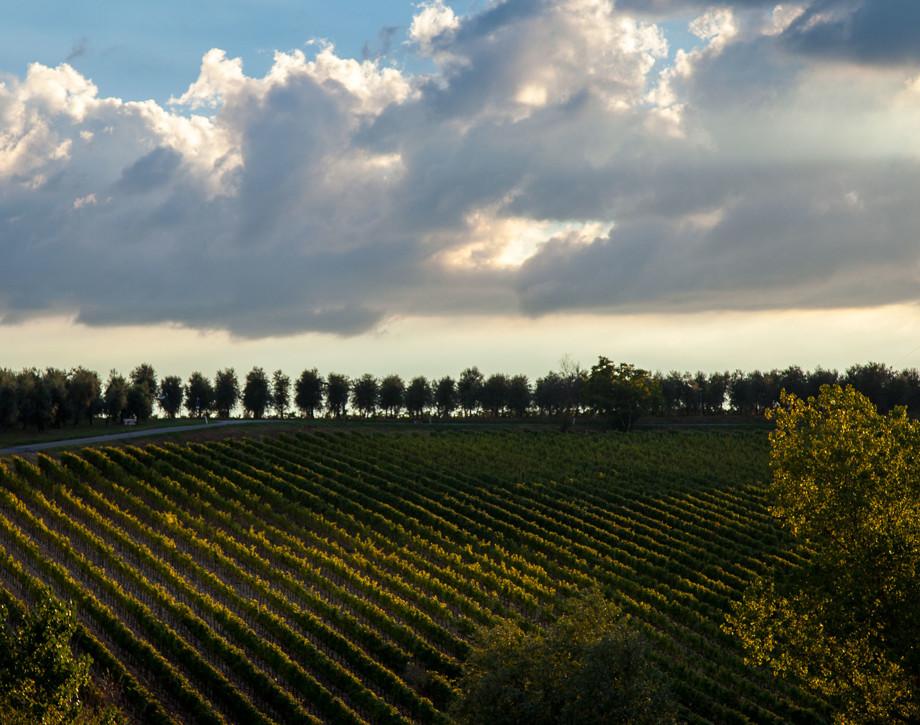Vinsanto Marchese Antinori

Climate
The Chianti Classico production zone was characterized by climatic conditions which were prevalently humid and mild in temperature during both the final months of the year 2013 and the winter of 2014. The frequent rainfall during the entire period was accompanied by temperatures above historical seasonal averages, and moments of either accentuated cold or snowfall were entirely absent. This weather pattern led to an early bud break, two weeks ahead of that of a normal vintage. Spring began without a return of cold weather, and the weather, instead, was rather dry and mild until the end of the month of June, guaranteeing a positive development of vine vegetation and assuring good flowering and bud break. Climatic conditions then changed during the summer months, with frequent precipitation which delayed the color change in the grapes and the first phases of the ripening process without, however, compromising either the quality level or the health of the crop. The Trebbiano and Malvasia grapes were picked between September 15th and September 20th.
Fermentation and Aging
The grapes, sourced from the various Antinori family estates in the Chianti Classico zone of Tuscany, were carefully selected and picked into small slatted packing cases. They were then manually destemmed onto the reed mats of the Tignanello estate drying facility and were left to dry and raisin until the month of December when this natural dehydrating process had concluded. The grapes were then given a soft pressing which maintained all of their aromatic and flavor characteristics. The must went into barrels coopered from various types of wood and of various sizes as well, ranging from 13 to 52 gallons (50 to 200 liters), where a long and slow fermentation took place and was then interrupted. The wine remained in barrel for a further three year aging period, and the barrels were then blended for bottling.
Historical data
The production of Vinsanto in Tuscany goes all the way back to the Middle Ages and the wine is considered a true regional specialty; the Antinori family has always produced it. The first vintage of the Vinsanto Tenute Marchese Antinori (a “natural” Vinsanto, not a fortified wine with alcohol added) was the 1987.
Tasting notes
The wine is a deep amber in color with golden highlights. On the nose, the sweet notes of dried fruit, hazelnuts, chestnuts and honey are enriched by additional aromas of honey. The palate is full-bodied, honeyed, and invigorated by a vibrant vein of acidity.
Awards
Wine Enthusiast 92/100 USA

Vinsanto
Vinsanto production in Tuscany and in the Chianti Classico region dates back to the Middle Ages. Observing traditional methods and strict production regulations, Vinsanto Tenute Marchese Antinori is produced from selected Trebbiano and Malvasia grapes that are left to dry in a completely natural process requiring time and patience. The resulting wine is intense and pleasing for its generous aromas and soft palate.

Climate
The Chianti Classico production zone was characterized by climatic conditions which were prevalently humid and mild in temperature during both the final months of the year 2013 and the winter of 2014. The frequent rainfall during the entire period was accompanied by temperatures above historical seasonal averages, and moments of either accentuated cold or snowfall were entirely absent. This weather pattern led to an early bud break, two weeks ahead of that of a normal vintage. Spring began without a return of cold weather, and the weather, instead, was rather dry and mild until the end of the month of June, guaranteeing a positive development of vine vegetation and assuring good flowering and bud break. Climatic conditions then changed during the summer months, with frequent precipitation which delayed the color change in the grapes and the first phases of the ripening process without, however, compromising either the quality level or the health of the crop. The Trebbiano and Malvasia grapes were picked between September 15th and September 20th.
Fermentation and Aging
The grapes, sourced from the various Antinori family estates in the Chianti Classico zone of Tuscany, were carefully selected and picked into small slatted packing cases. They were then manually destemmed onto the reed mats of the Tignanello estate drying facility and were left to dry and raisin until the month of December when this natural dehydrating process had concluded. The grapes were then given a soft pressing which maintained all of their aromatic and flavor characteristics. The must went into barrels coopered from various types of wood and of various sizes as well, ranging from 13 to 52 gallons (50 to 200 liters), where a long and slow fermentation took place and was then interrupted. The wine remained in barrel for a further three year aging period, and the barrels were then blended for bottling.
Historical data
The production of Vinsanto in Tuscany goes all the way back to the Middle Ages and the wine is considered a true regional specialty; the Antinori family has always produced it. The first vintage of the Vinsanto Tenute Marchese Antinori (a “natural” Vinsanto, not a fortified wine with alcohol added) was the 1987.
Tasting notes
The wine is a deep amber in color with golden highlights. On the nose, the sweet notes of dried fruit, hazelnuts, chestnuts and honey are enriched by additional aromas of honey. The palate is full-bodied, honeyed, and invigorated by a vibrant vein of acidity.
Awards
Wine Enthusiast 92/100 USA

The Specialties Of The Chianti Region
Chianti Classico is the heart of Tuscany not only from a geographical perspective but also due to its historical and cultural importance, its traditions and for its strikingly beautiful territory. Chianti Classico is home to Marchesi Antinori’s historic estates, a family of winemakers since 1385 who have always been passionate about their ancestral territory. The specialty products produced by Antinori, brandy, grappa, Vinsanto, extra virgin olive oil and vinegar, are all remarkable tributes to Chianti Classico’s rich, generous countryside and its authentic production perfected through centuries of agricultural and viticultural traditions.
















